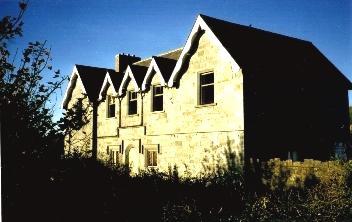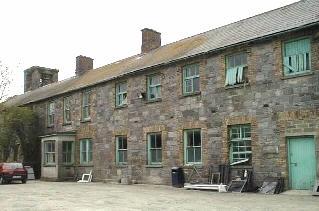

The contract for the building of the workhouse in Callan was agreed on the 29th May 1840 and the building was completed in September 1841. It cost £5,500 to build, and £1,120 to fit out, a total expenditure of £6,640. It was the biggest construction project ever undertaken in Callan. The entire complex covered an area of 6 acres, 1 rood and 36 perches, purchased for £760. It was built to accommodate 600 people and its first admissions took place on 25th March 1842.
In its first years of operation, the Callan workhouse functioned very well, but the catastrophe of the Great Famine totally overwhelmed it reducing its functions to utter chaos. Built to accomodate 600 people it had at the height of the famine thousands of people clamouring for admittance. Even in 1851 it was still totally crammed with unfortunate people. The Census of that year lists 2,102 people as residing in it.
The victms were carted off to the pauper graveyard in Baunta Commons for burial. Harrowing tales have been passed down about this whole era of degradation and misery. It is said that up to six bodies at a time were brought out for burial and that it was not uncommon for corpses to fall off the "funeral cart" because the boreen into the burial ground popularly known as Cherryfield was so rough and muddy.
The history of Callan Workhouse is still waitng to be written.  After the famine Years, the workhouse settled back into a more "normal" level of operation and continued to function up to the 1920's. In 1922 it was garrisoned by Free State troops for a period during the civil war. It was later sold to private individuals and public bodies. Most of the buildings continue to exist to this day in various states of preservation, monuments to our ancestors' misery and humiliation.
After the famine Years, the workhouse settled back into a more "normal" level of operation and continued to function up to the 1920's. In 1922 it was garrisoned by Free State troops for a period during the civil war. It was later sold to private individuals and public bodies. Most of the buildings continue to exist to this day in various states of preservation, monuments to our ancestors' misery and humiliation.